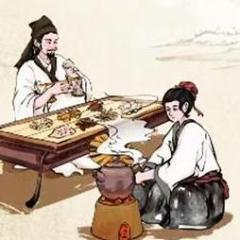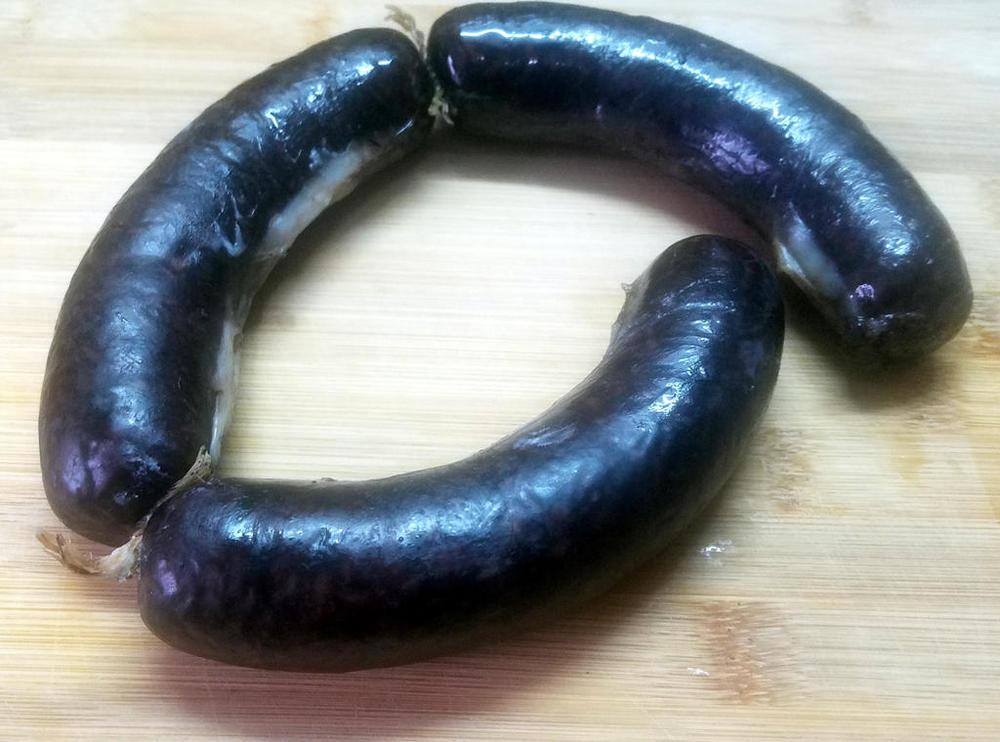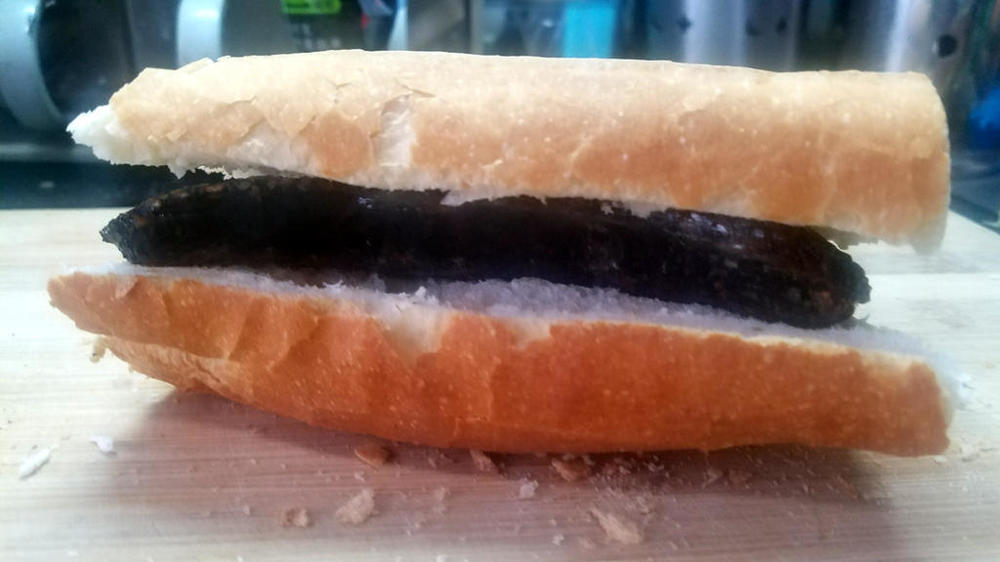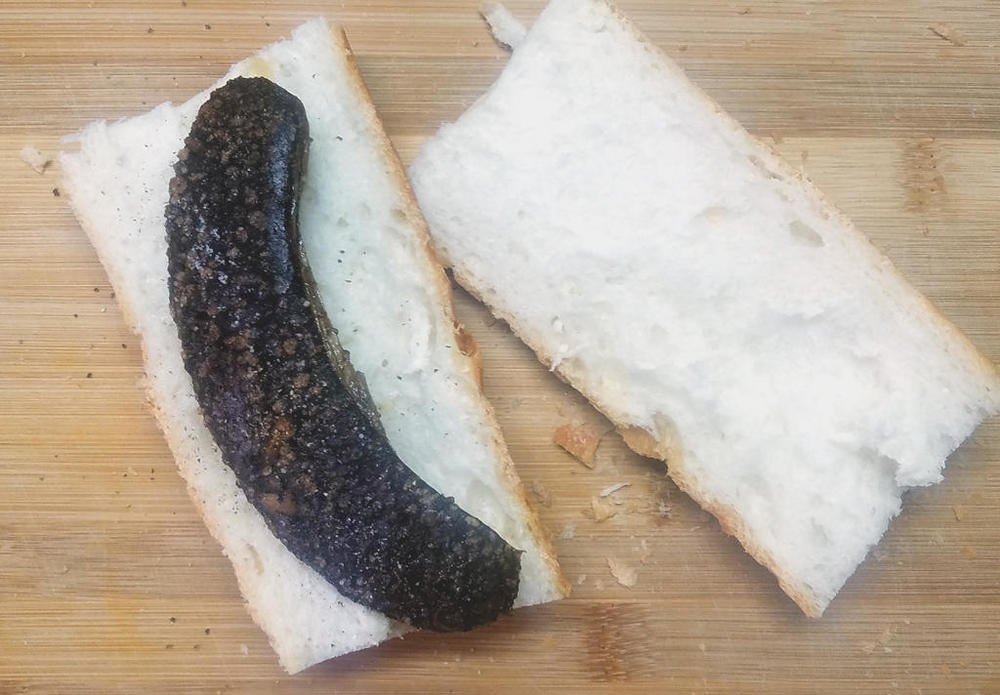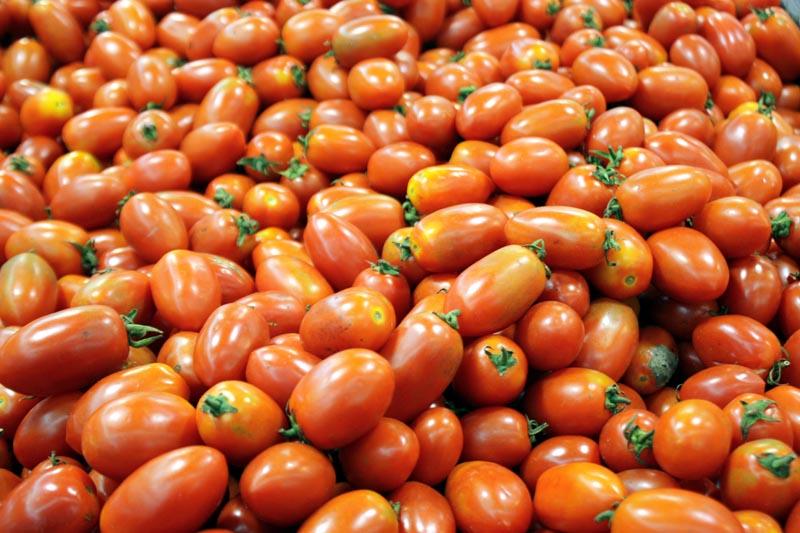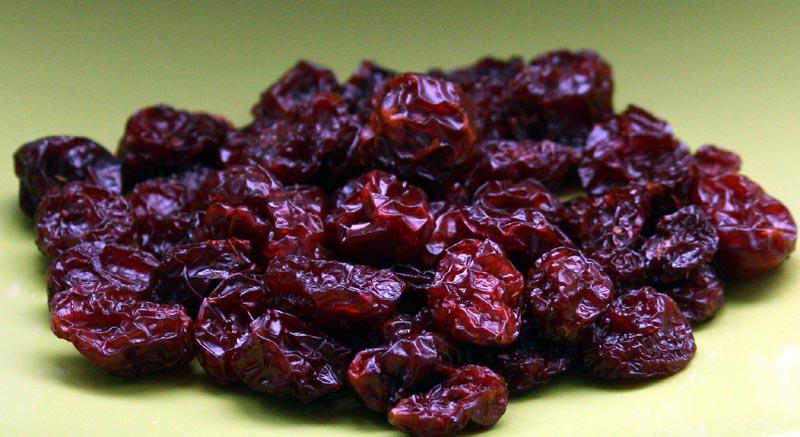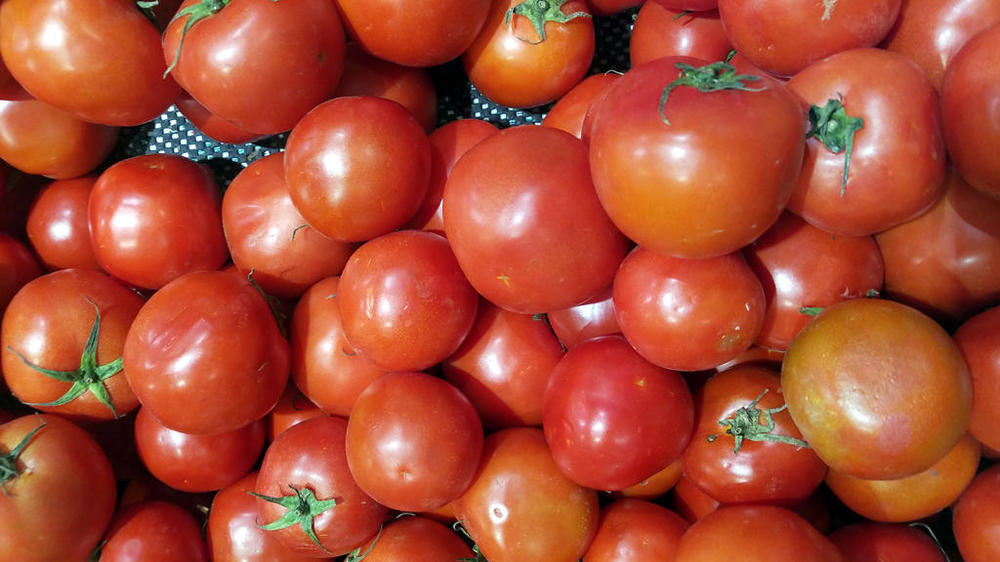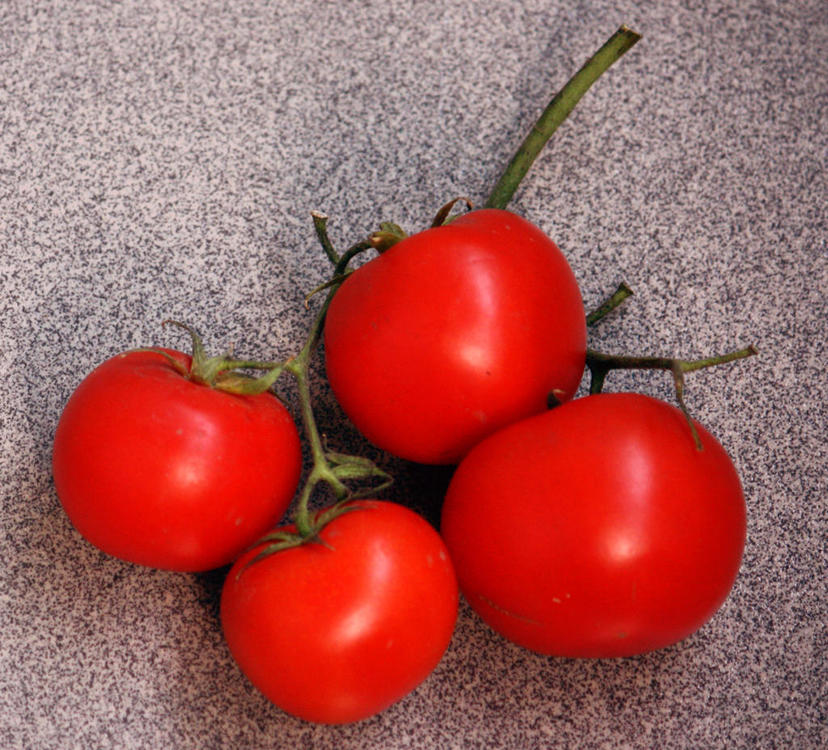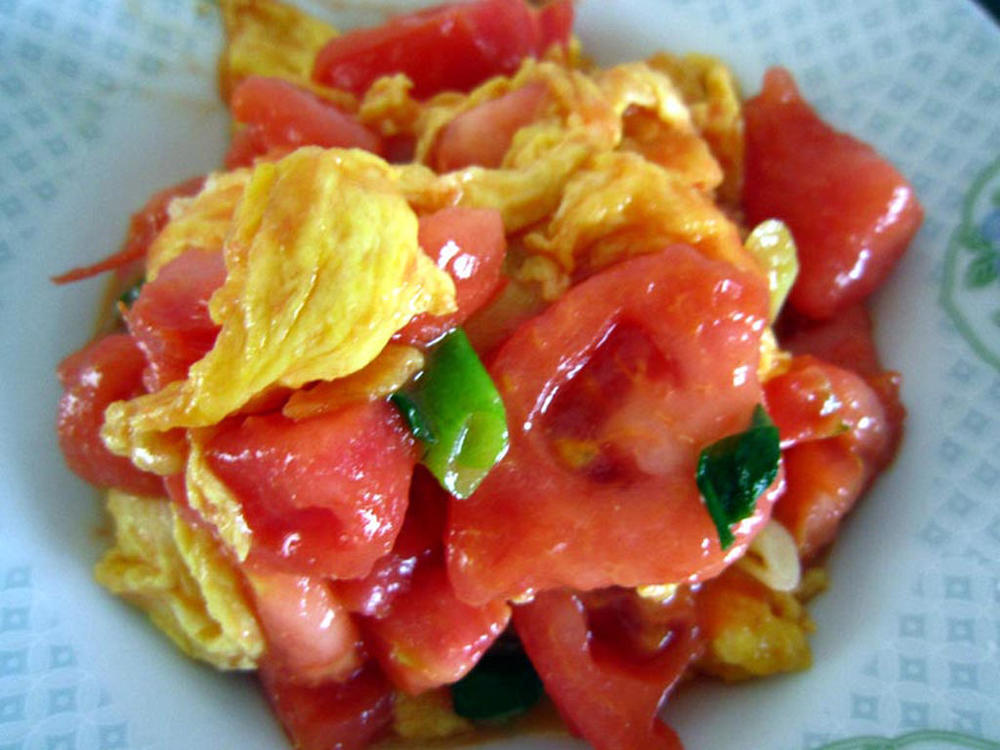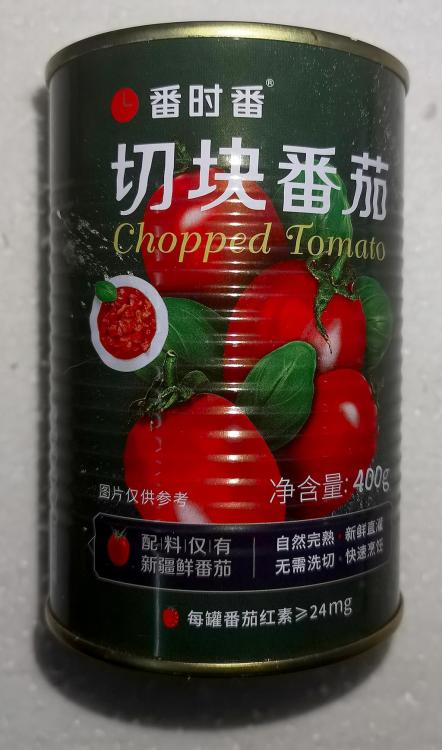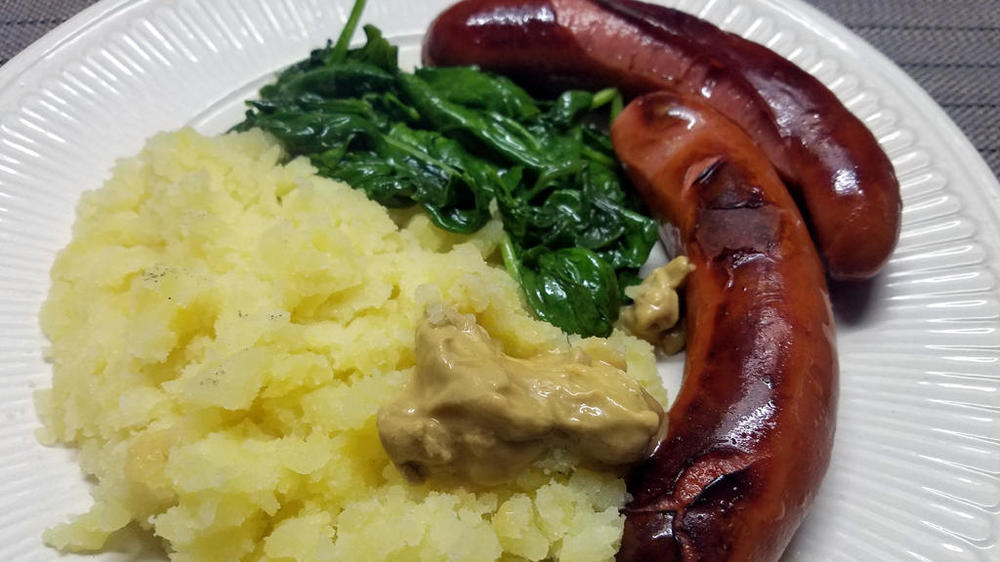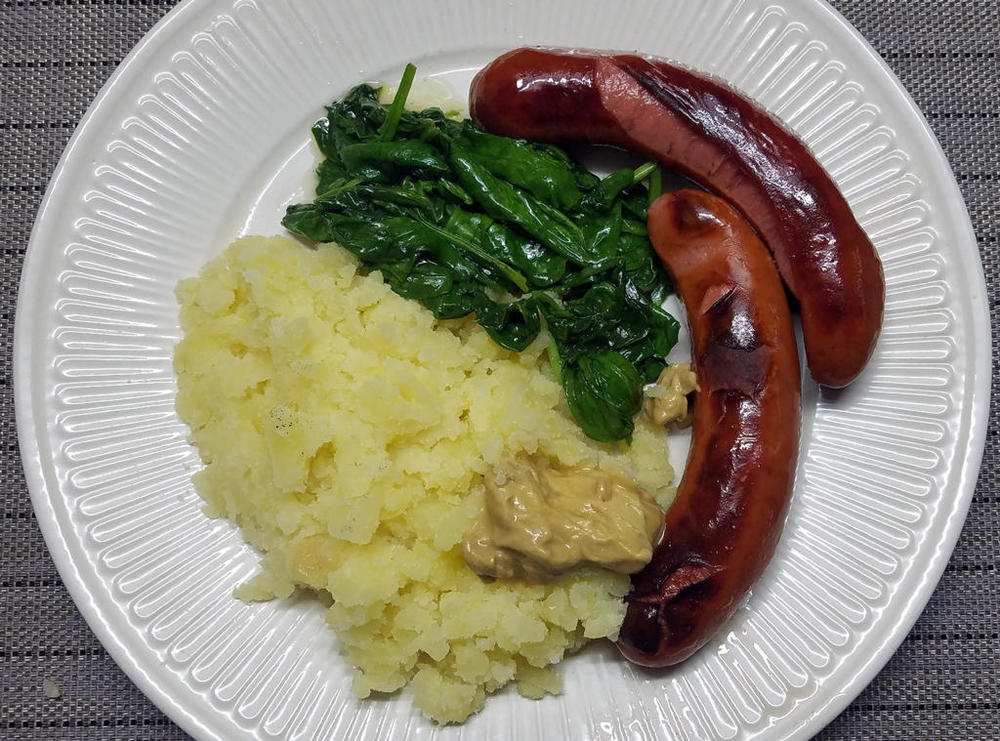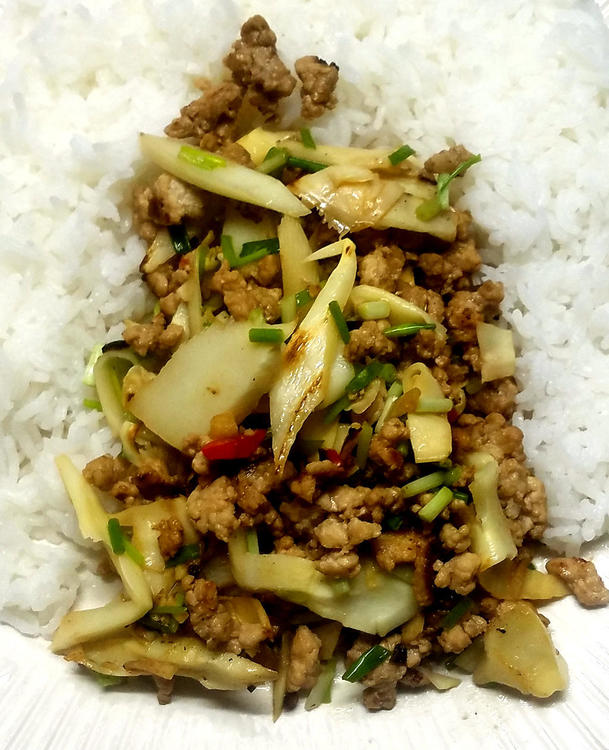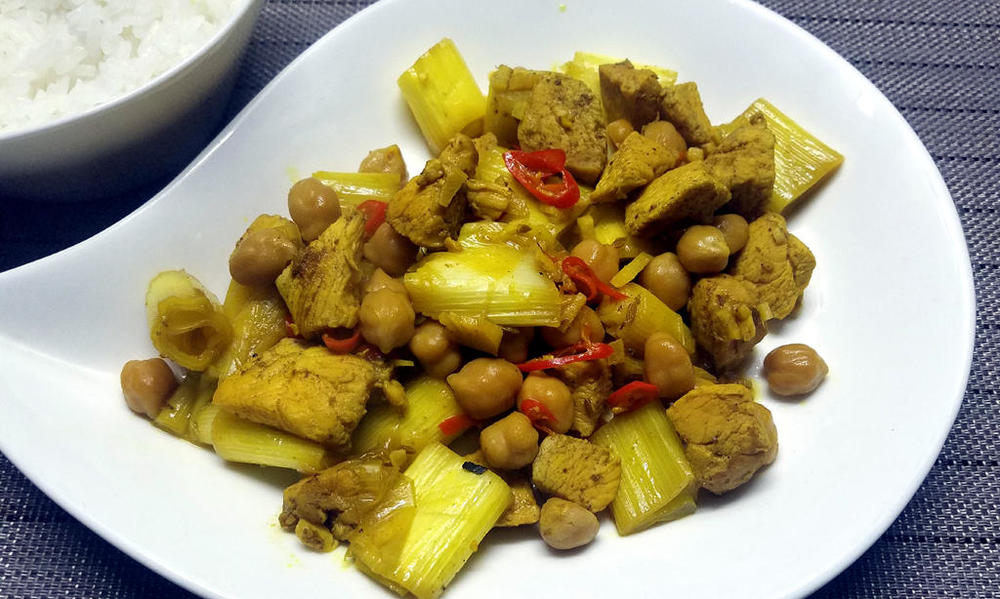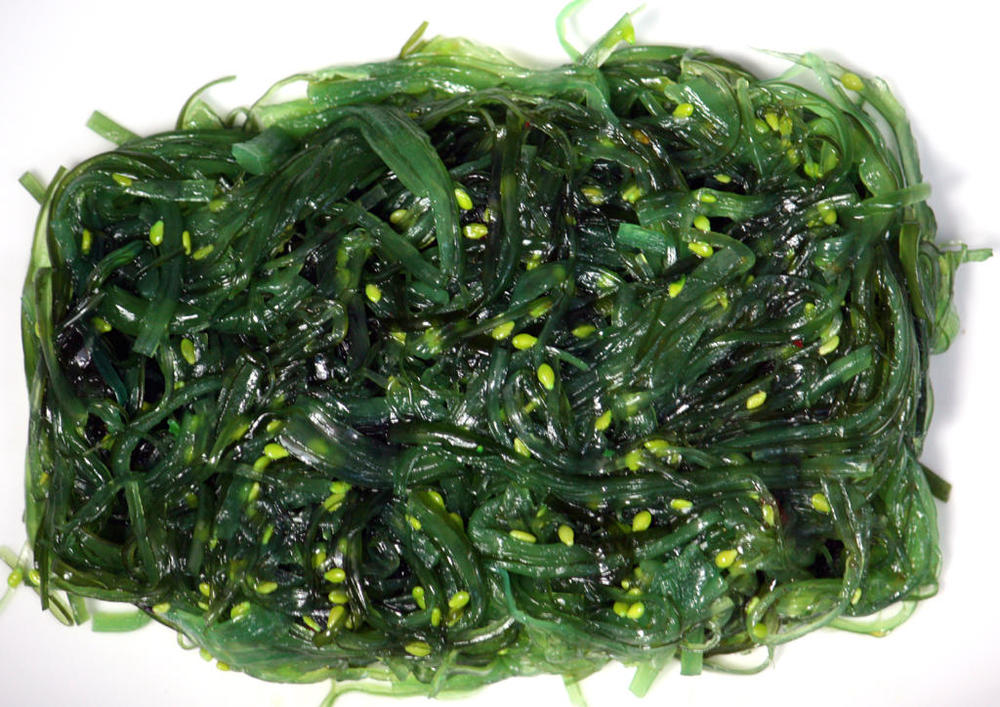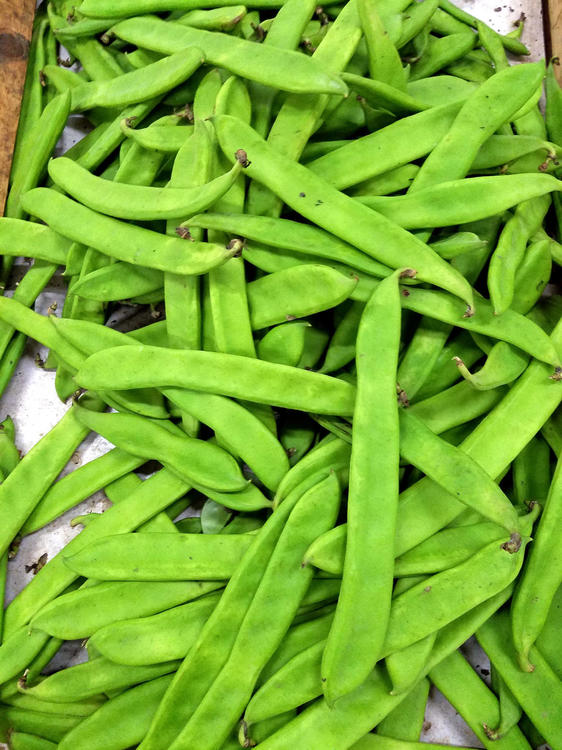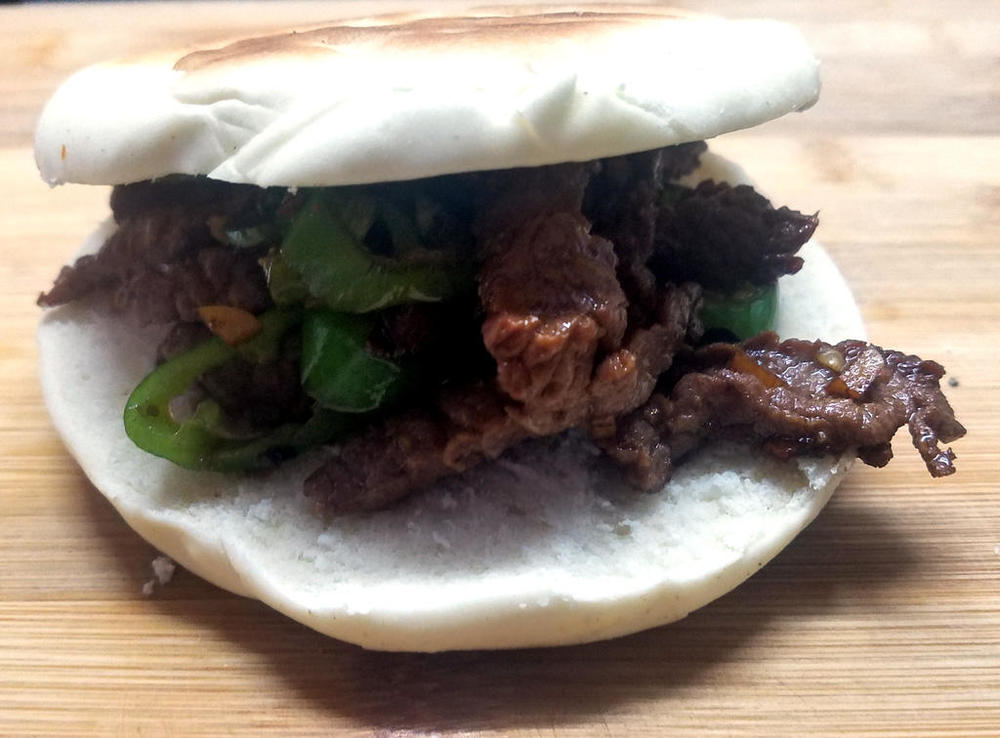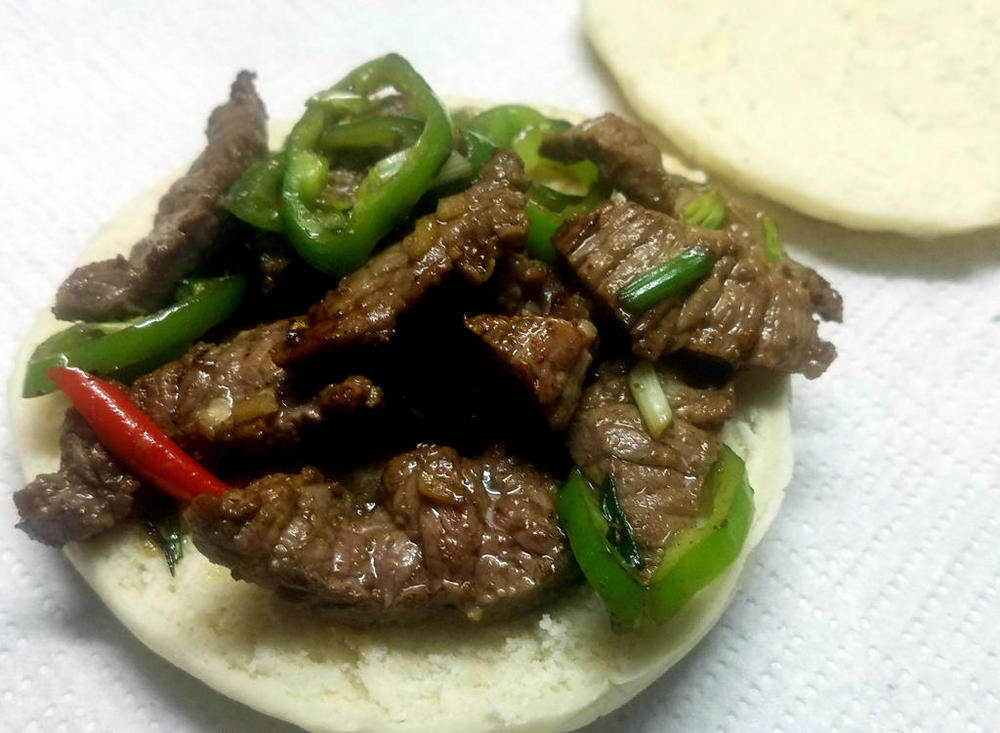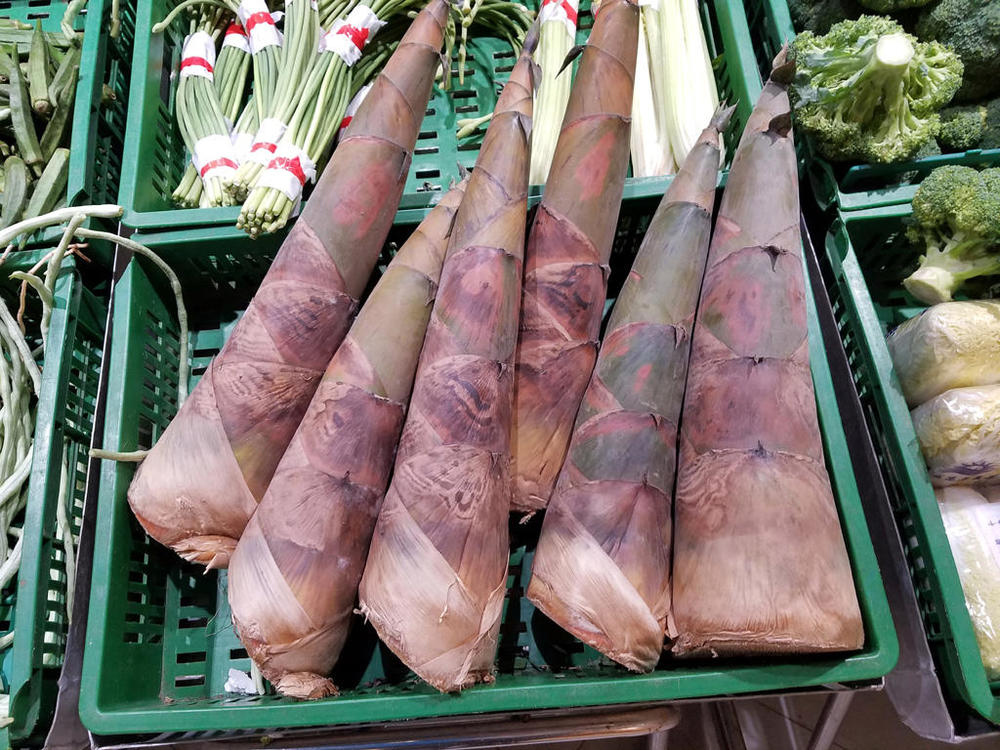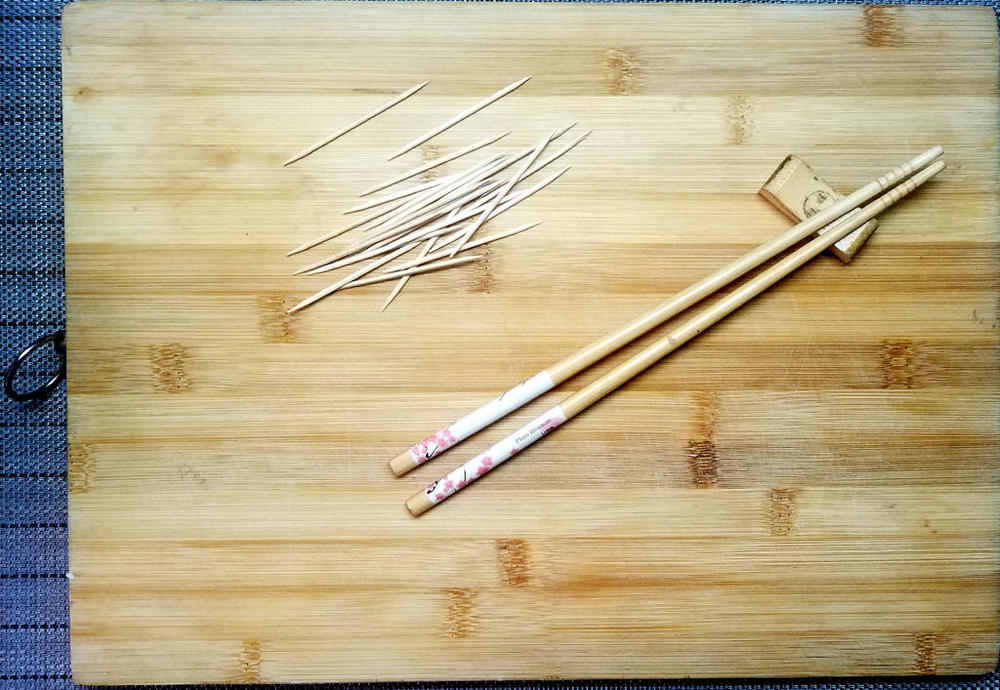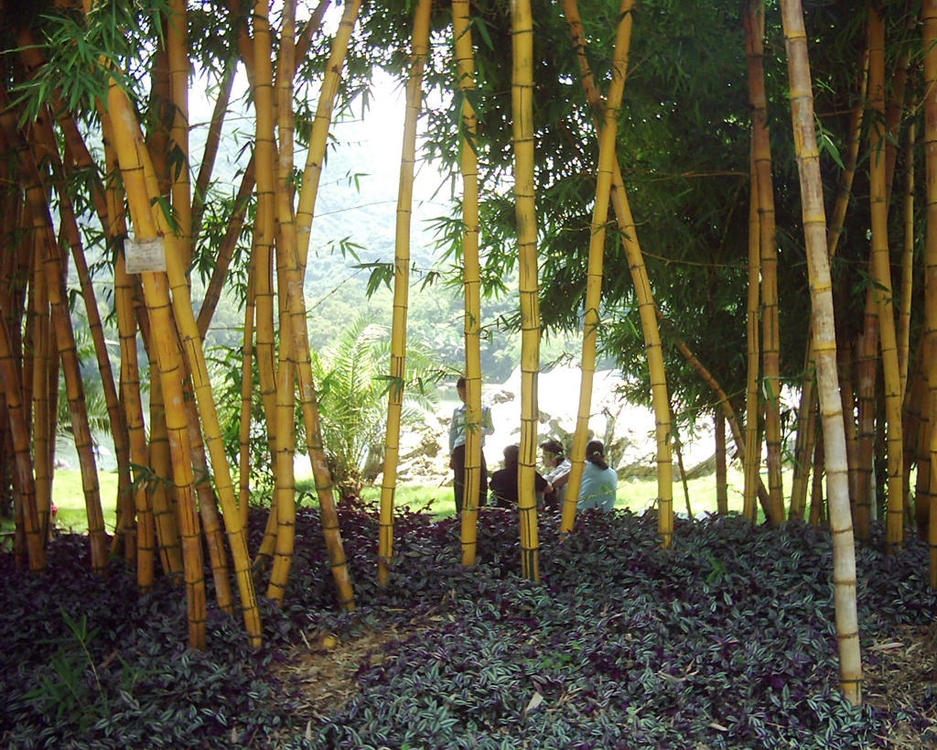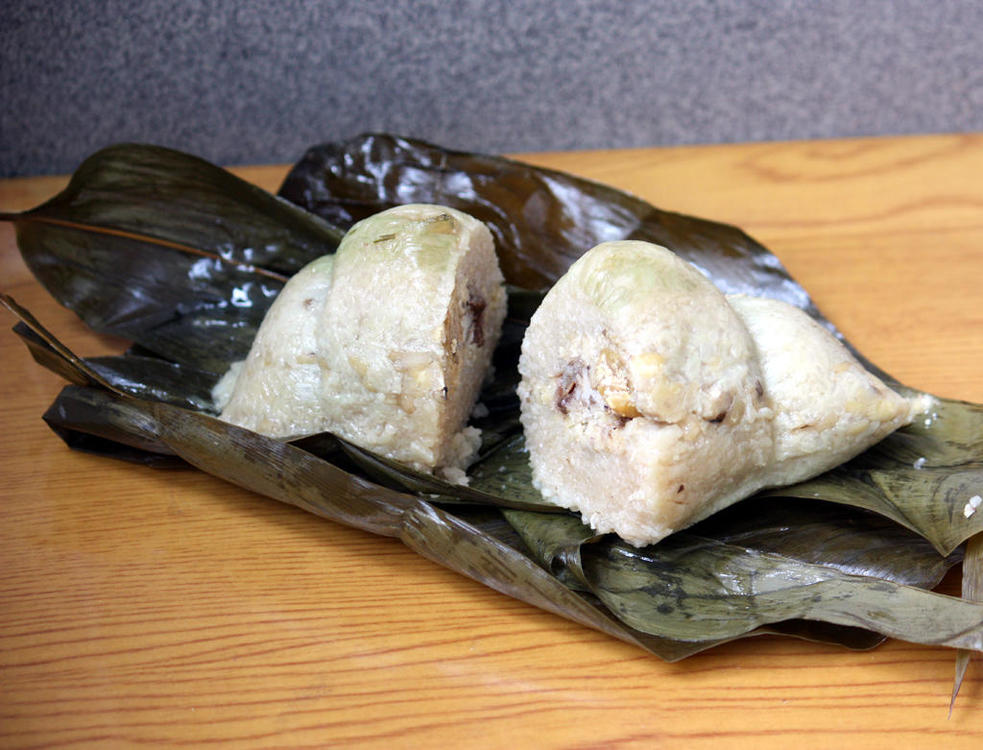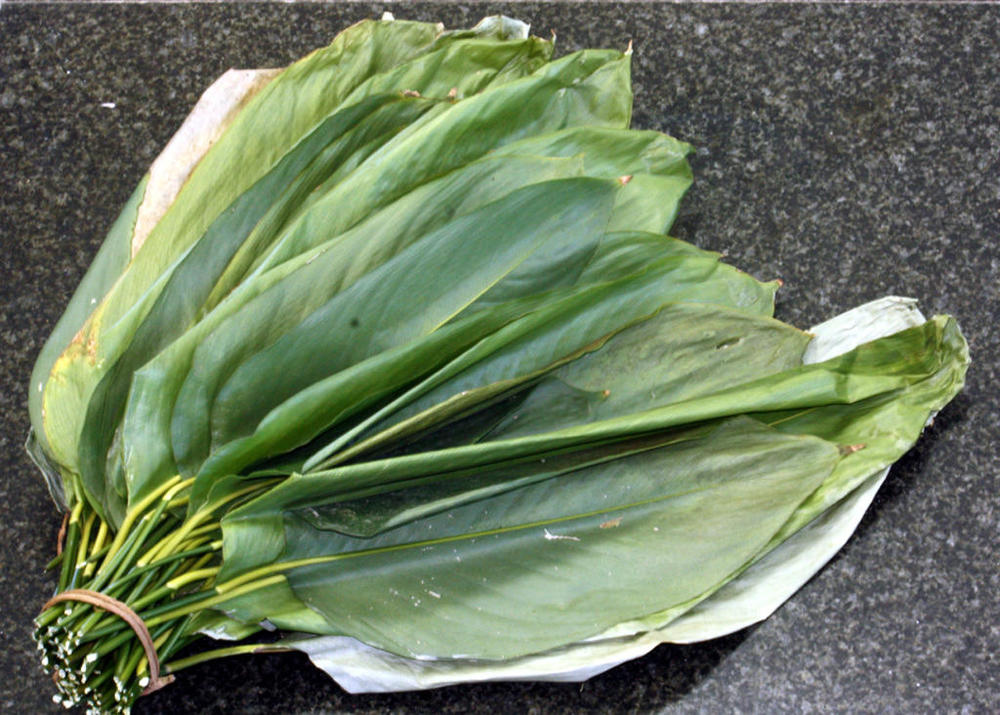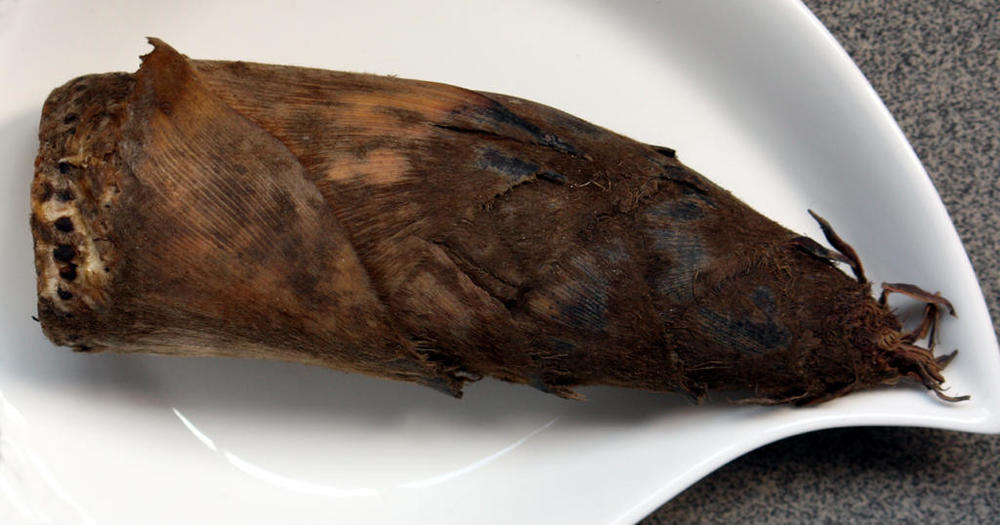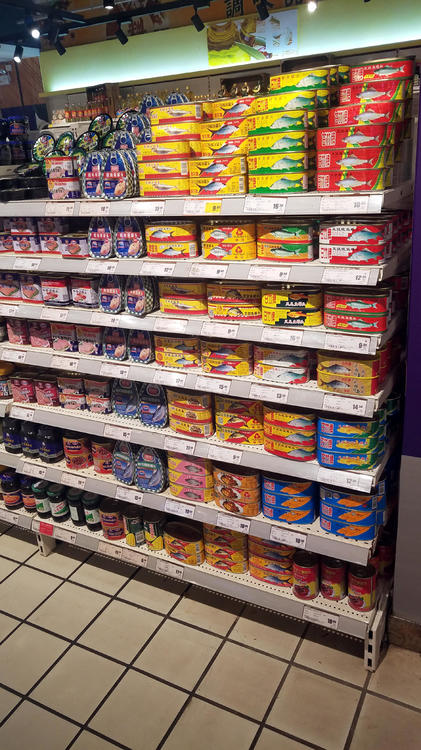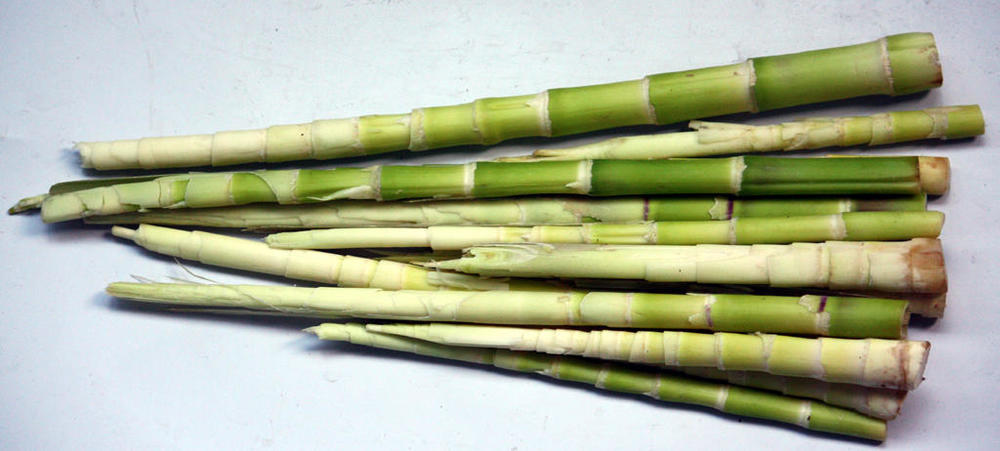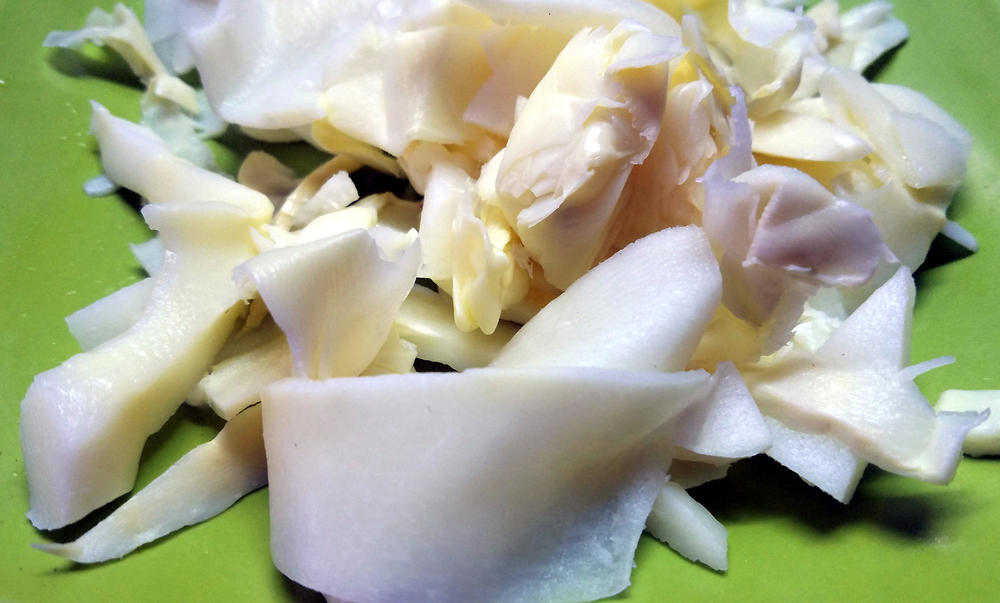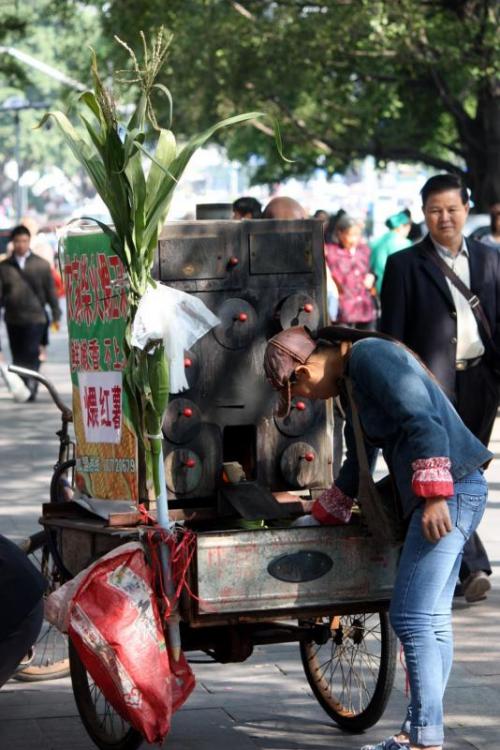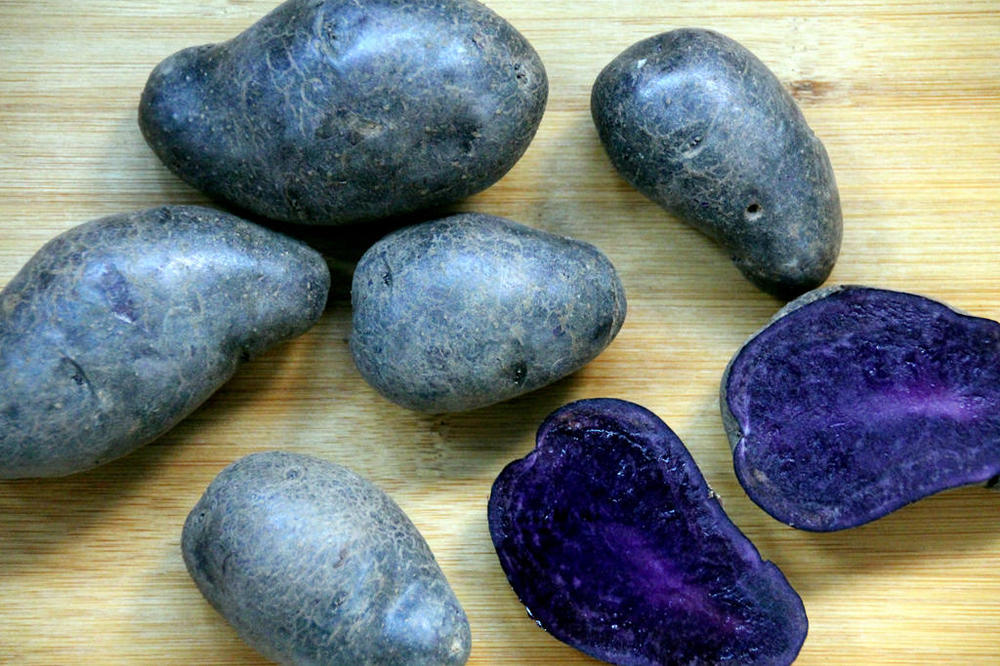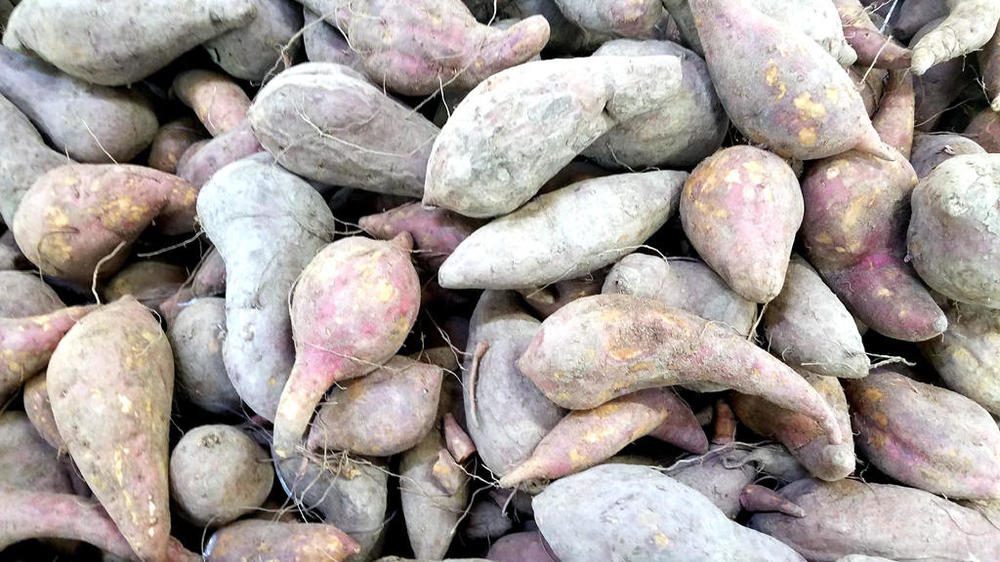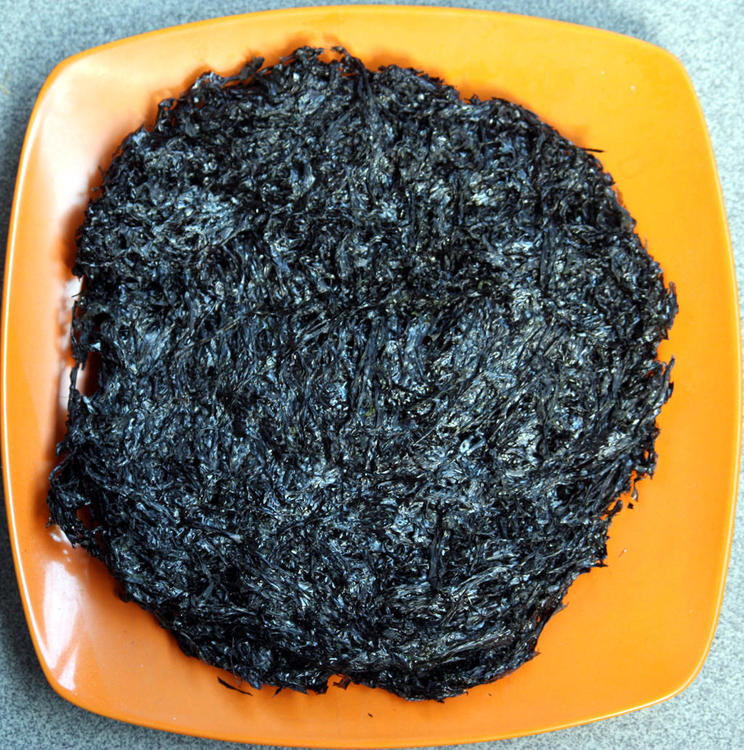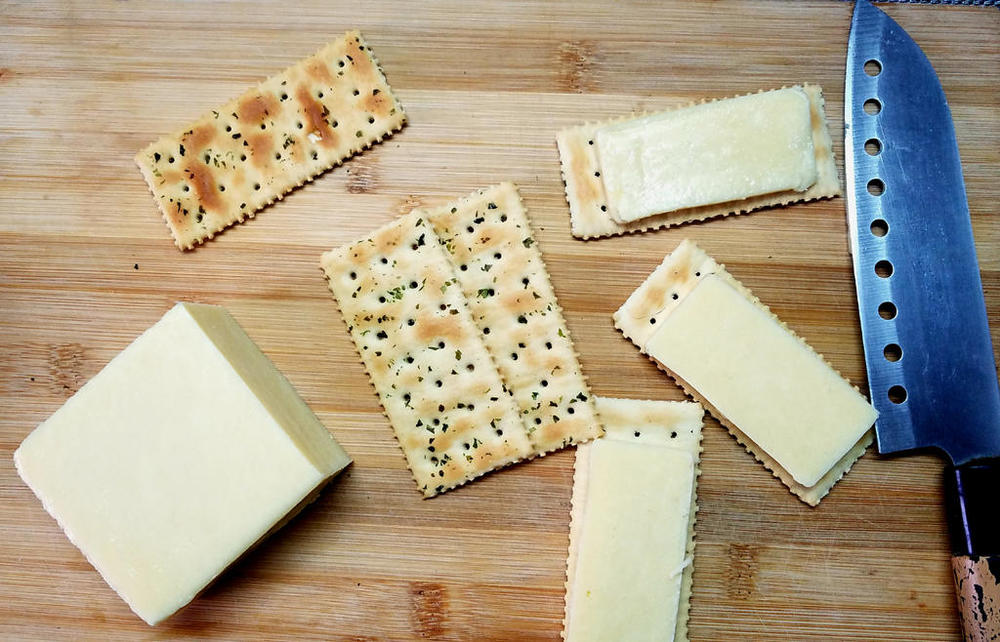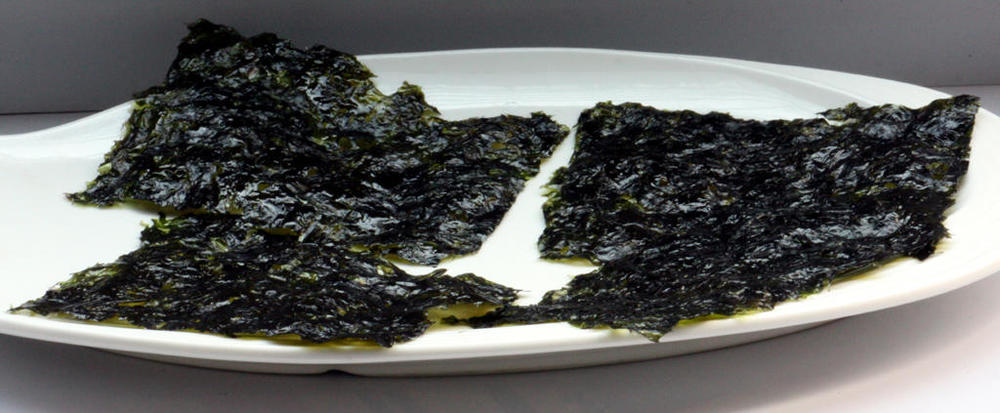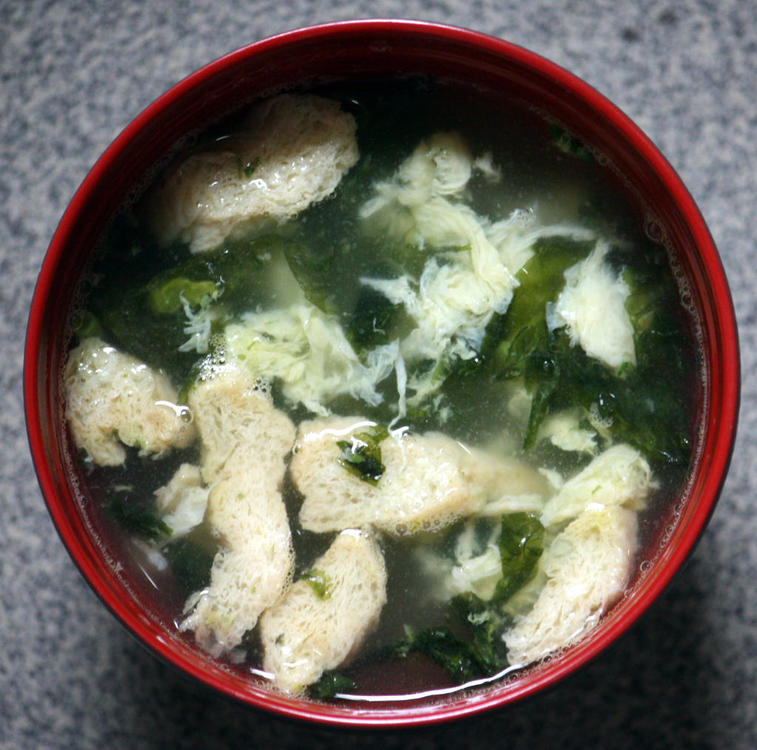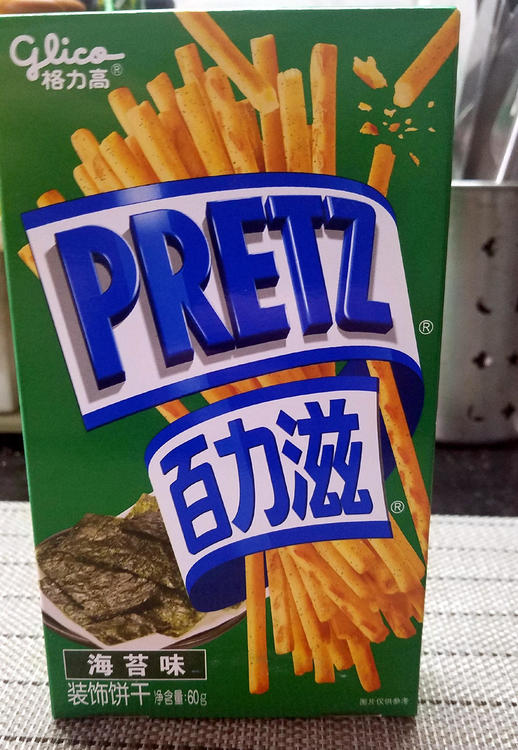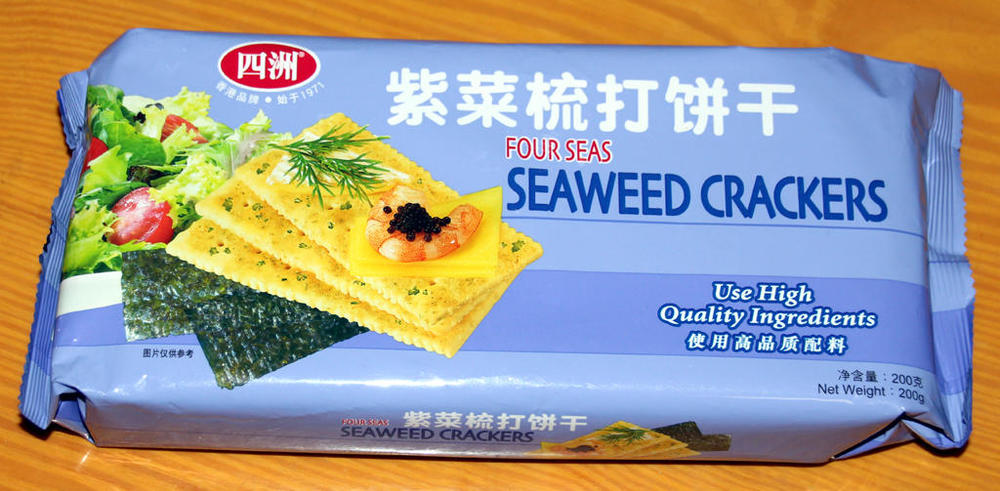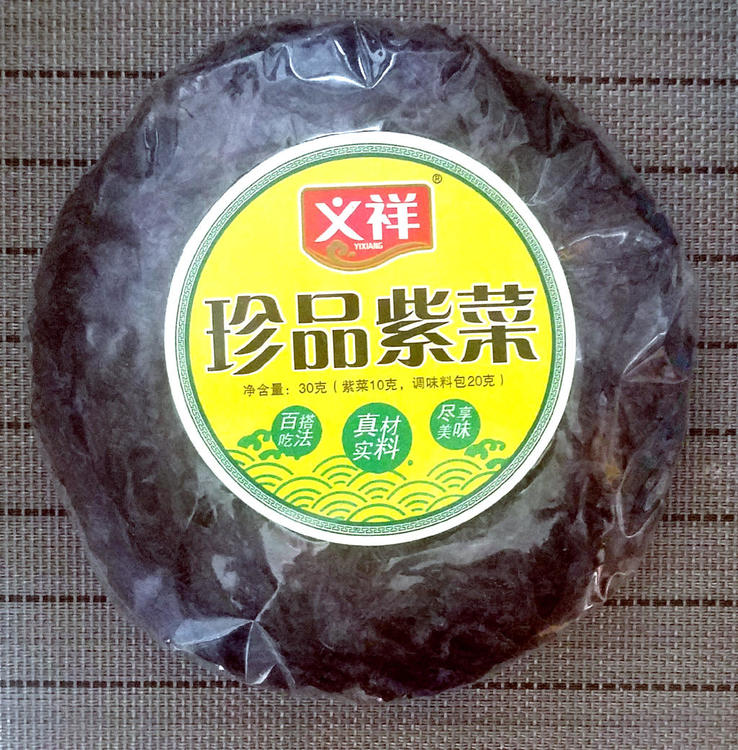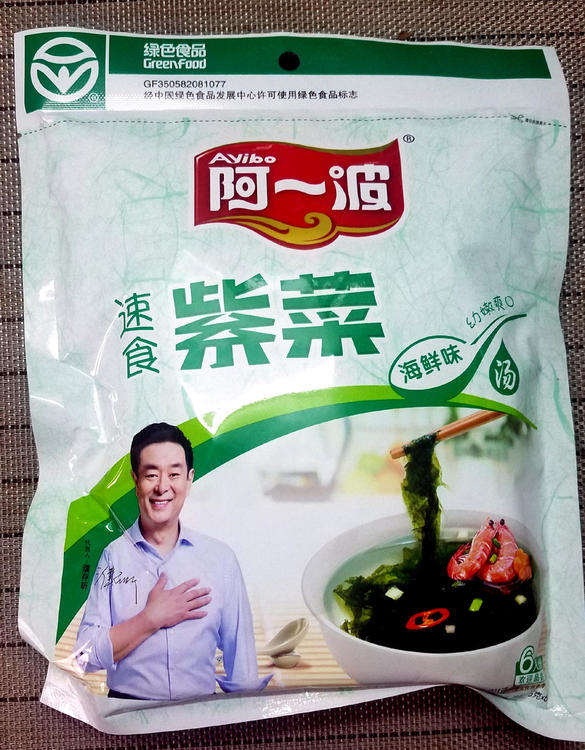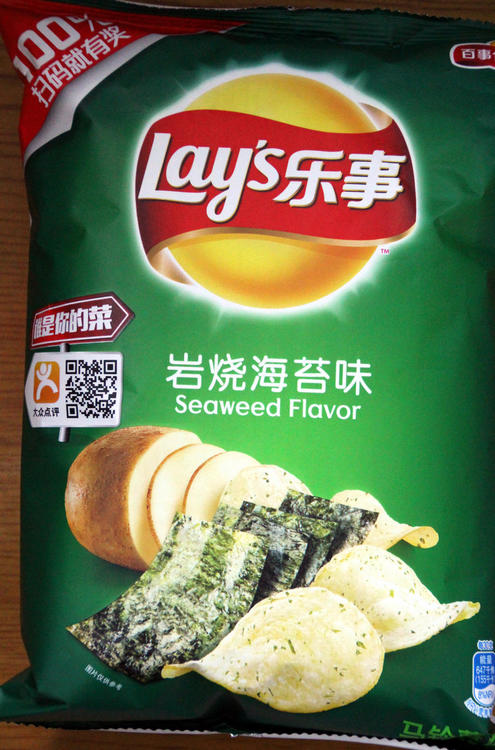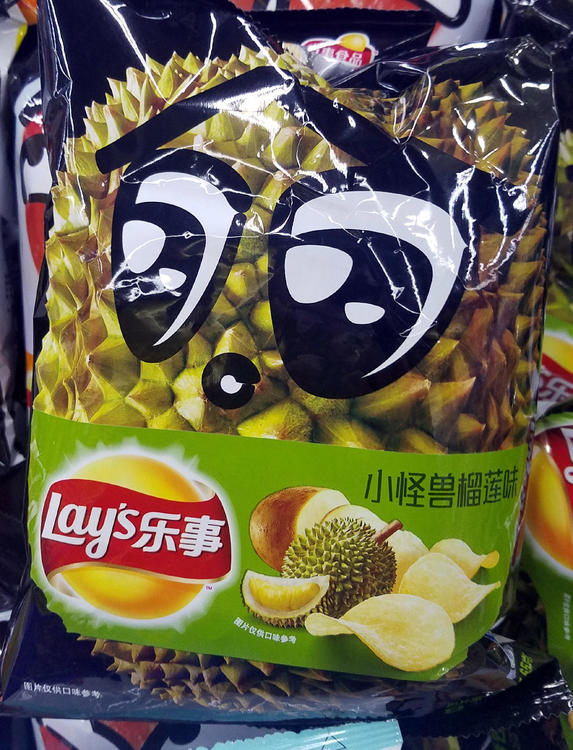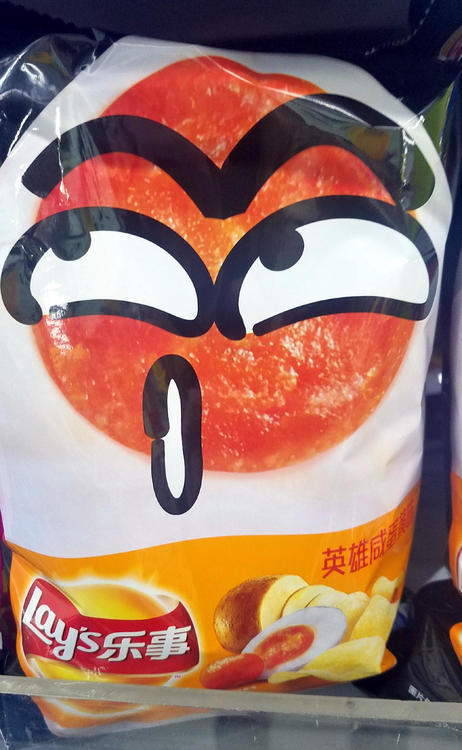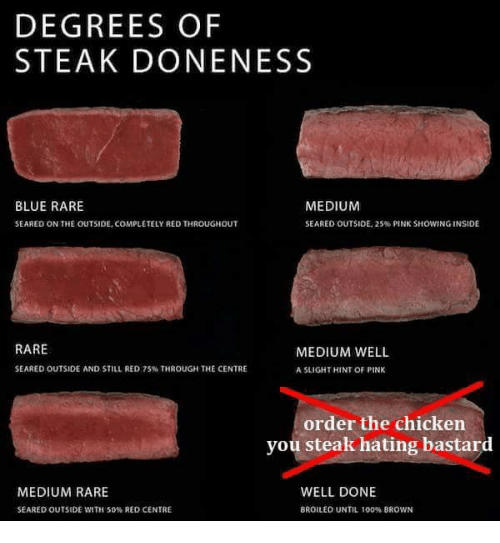-
Posts
16,714 -
Joined
-
Last visited
Content Type
Profiles
Forums
Store
Help Articles
Everything posted by liuzhou
-
I called it blood sausage as a direct translation of the Chinese. It is more like the the black pudding I grew up with last century in Scotland than say a French boudin noir, but I love them all. On my rare visits back to the UK, my beautiful daughter always makes sure to stock up for me. Stornoway Black Pudding - the food of the Gods.
-
As I've mentioned here more than once, eating raw food, including vegetables, is extremely rare in China, even recently. You have to remember that "night soil"* is still used as a fertiliser. Vegetables are washed thoroughly (to extreme) and then cooked. And before people get freaked out about night soil, remember it was common in the US until relatively recently. *Human and other excrement.
-
I had a plan for lunch, but a chance find in a small store changed everything. Over a year ago my regular supplier disappeared and there has been none to be found. Until today. I had just left the bakery where I purchase baguettes and took an unusual route. Outside a small store was a pile of these. Blood sausage. Pig's blood and rice. Half lengthwise, fry, drop onto similarly sliced baguette. No butter or other lubricant required. Cover. Put in mouth, chew and swallow. Make another one. Repeat until sated. Accompany with beer or builder's tea. I never drink builder's tea, so it was a beer.
-
I think I have now documented pretty much everything in the markets and supermarkets at present along with some things which I can't get now, but had photographs of. More will turn up as time passes, but with this being the start of winter there isn't going to be much. Come spring, I'll be busy here again. (I bet, having said that, two new items will turn up tomorrow. @Anna N - I haven't forgotten your red bean question and will continue to check for supplies. I have asked friends, but none admit to ever having cooked them, so don't know.) In the meantime, I have been going back to previous entries and adding information, clarifications or images and correcting some mistakes. This I will continue to do. So, in the unlikely event that anything fascinated you before, you may wish to go back for a second look. It may be different.
-
You may be surprised that I'm including these here. Nothing exotic about them. Well, I'm not trying to show you "exotic", but what we get in China. In fact, one of the Chinese names for this item suggests that the Chinese once found them exotic. 西红柿/西紅柿 (Mand: xī hóng shì; Cant: sai1 hung4 ci2) literally means 'western red persimmon'. The other, equally common name is 番茄 (Mand: fān qié; Cant: faan1 ke4*2) and they are tomatoes. The quality of what we get is average. I've had worse. My problem is getting my nearest supermarket to stop shelving them in the chill cabinets and ruining them. In season, we also get them on the vine, which improves them. They are not so common in Chinese cuisine as in many western cuisines, although there are a few well-known dishes that use them. Best known is scrambled egg with tomatoes, the one dish that every Chinese person over five-years-old can cook. Often the only dish some can cook. Other dishes that come to mind are Nanning's "Old Friend's Noodles" and Guilin's Beer Fish and a few Sichuan dishes. These tomatoes are always displayed in the vegetable sections of supermarkets and on vegetable stalls in farmers' markets. Cherry tomatoes are sold separately in the table fruit sections and stalls. The Chinese consider them to be unrelated. In Mandarin, to my delight, they are known as 圣女果 (Mand: shèng nǚ guǒ) which means "Saintly Women Fruit", There may be no saintly women in Cantonese speaking areas as they don't use this term, but instead go for 车厘茄 (Cant: ce1 lei4 ke4*2) which doesn't really mean anything at all. Cherry tomatoes most often turn up in fruit salads in western restaurants or are simple eaten as a table fruit. My Chinese friends are always surprised that I use them in savoury dishes. These, too turn up on the vine at the appropriate time of year. They are also dried and sold as a snack item. These I like a lot, although I usually dry them myself. Canned , imported tomatoes are only generally available on-line at silly prices. Edit April 2023 I recently came across these canned tomatoes from Xinjiang, China's westernmost province. They're good and reasonably priced.
-
I've often wondered that, too. For example, how did people work out which mushrooms taste great and which kill you? Trial and fatal error? And many other foods are poisonous unless prepared correctly. A marvel indeed. The bamboo is cooked before pickling, yes. The bamboo leaves are soaked overnight before being used as wraps then steamed.
-
First cold day of the year and I needed comfort food. Bangers and mash with spinach and Dijon mustard.
-
-
@liamsaunt Lovely looking food. And many happy returns for your anniversary.
-
I have been unexpectedly out of town for a couple of days, eating very average hotel food, so was glad to get back this afternoon and do some shopping in the rain. I picked up some chicken, but little else, knowing I had stuff in the fridge that needed dealing with. I wanted some spinach, but the early birds had taken it all. I'm not going to give this a name. It is a strange mix of cultures, but I enjoyed it. Chicken chunks (not refined enough to call cubes) marinated in the usual Chinese way with Shaoxing, garlic, ginger and chilli. Cooked with toasted fennel and cumin. Then braised with chick peas, leeks and turmeric. Served with rice and wilted nothing else, on account of the spinach disappointment. Never mind. It left my mouth happy.
-
Another seaweed we occasionally get is 裙带菜/裙帶菜 (Mand: qún dài cài; Cant: kwan4 daai3 coi3). This is what is widely known as 'wakame' from the Japanese or 'sea mustard' in English. I've only ever seen it pre-prepared and dressed on the sushi counter of local supermarkets. I always buy it when I see it. A favourite.
-
A couple of late arrivals. Canavalia gladiata 刀豆 (Mand: dāo dòu; Cant: dou1 dau6*2) are what you possibly know as sword beans, although that term is sometimes used for other species. These are almost always simply stir fried. We also get the dried beans which are known as 红刀豆/紅刀豆 (Mand: hóng dāo dòu; Cant: hung4 dou1 dau6*2) meaning 'red sword beans', as the beans in the pod are - you guessed, red!
-
MSG is in the list of ingredients.
-
-
竹 (Mand: zhú; Cant: zuk1) is one of the world's most beautiful plants and definitely the most useful. It is used for so many things. It's a building material - people make houses from it. It is as strong if not stronger than steel and is used as scaffolding across China, but especially in Hong Kong. I look around my home and see this plant everywhere. I have clothes made from it. The pen holder on my desk is made from it. You can even buy computer keyboards and mice made from it. It is made into paper. In the kitchen, it is even more apparent. Chopping boards, brushes, rolling pins, bowls, baskets, serving dishes, mats, chopsticks, toothpicks and more. The only thing here which isn't bamboo is the metal hanging ring on the left. And we eat it. I am of course, talking bamboo. There are over 1,400 different species but we mainly eat the shoots of only a few. Phyllostachys edulis and Bambusa oldhamii in particular. In Chinese the shoots are 竹笋 (Mand: zhú sǔn; Cant: zuk1 seon2) often abbreviated to 笋 (Mand: sǔn; Cant: seon2). Bamboo shoots Bamboo shoots contain a cyanogenic glycoside that produces cyanide in the gut, so must be prepared correctly by thorough cooking. The shoots are boiled, then peeled and sliced. These can then be stir fried along with other ingredients. Peeled shoots Sliced and peeled sweet bamboo The bamboo pictured above is referred to as 甜笋 (Mand: tián sǔn; Cant: tim4 seon2) or sweet bamboo. It is sold preprepared in many supermarkets and just needs frying. Winter bamboo is harvested around November to December. I haven't seen it yet this year. Winter bamboo Bamboo is also pickled and is an important ingredient in Liuzhou's signature dish 螺蛳粉 (Mand: luó sī fěn) Luosifen - river snail noodles. The leaves of bamboo plants are used in the kitchen, too. The are used to wrap various foods, especially 粽子 (Mand: zòng zi; Cant: zung3 zi2), sticky rice dumplings. Bamboo leaves Zongzi The canned bamboo shoots available in many overseas Chinese or Asian stores are unknown here. In fact canned goods at all, are rare. This is the whole of the canned goods section of one of the city's largest supermarket. L: Luncheon meat; R Canned fish
-
The world’s most expensive ham Well, that's my list for Santa sorted out, then. Interesting article.
-
Yes, They are occasionally called 甜薯 (Mand: tián shǔ ; Cant: tim4 syu4 ) or 'sweet potato' here, too
-
A couple of related strays 红薯 (Mand hóng shǔ; Cant: hung4 syu4). Red potato. These are very popular, especially at this time of year and through the winter. They are often steamed with other root vegetables. Alternatively, there are dozens of guys like this, selling them roasted in the streets. Then we have these. Known as 黑薯 (Mand hēi shǔ; Cant: hak1 syu4), meaning 'black potatoes' or, perhaps more accurately, 紫薯 (Mand zǐ shǔ; Cant: zi2 syu4), 'purple potatoes'. The skin can be purplish black, but the flesh is this bright purple, which fades when they are cooked. They are used in the same manner as the red potatoes.
-
Re: seaweed. Please note, for those who don't already know, what is served in western Chinese restaurants as 'crispy seaweed' isn't seaweed. It is cabbage!
-
The second seaweed we get is 紫菜 (Mand: zǐ cài; Cant: zi2 coi3), literally 'purple vegetable'. This is Porphyra umbilicalis or laver. It turns up in all sorts of places, though we don't get it fresh. It comes in circular packs of dried weed like this: This is used in soup, often with seafood or with egg. Laver and egg soup These soups are sold as instant soup mix everywhere. Processed using a technique similar to paper-making this becomes known as 海苔 (Mand: hǎi tái; Cant: hoi2 toi4), which sushi fans know of as nori, used for wrapping sushi rolls etc. It is used the same way here - yes, China loves sushi. After all, they invented it! Nori style seaweed is also seasoned in various ways, often with soy sauce and sold as a snack item. Every supermarket and corner shop has it. It also features in many other snack items. and even Lay's make seaweed chips using it. as does the maker of my favourite crackers to use with cheese.
-
Yes. In salted eggs. I bet they taste nothing like salted eggs.
-
Two new to China and being promoted in my local supermarkets. Hero Salted Egg Yolk Flavour Young Monster Durian Flavour I surrender.
-


